The Mysterious Passengers
“Inform your Mistress that this will not stand.”
The surf was teasing the launch’s stern while three Krimsian Guards waited in the sand near the vessel’s bow. The sky and the beach were white, with sea birds attracted by the novelty of humans on their shores.
“You have been paid in full for your services,” Syisha did not want to prolong this parting for fear that they would all lose their nerve. “Please cast off before you miss your rendezvous.”
“We are not interested in further profit,” insisted Rowl, the Captain of the Krimsian Guard. “But our reputations would suffer if we left clients to face the legendary perils of Disiri Island alone. We understand you seek something beyond these cliffs, at the very heart of the Three Rings.”
“It is not the island that endangers you,” the men turned to face Lady Nacia Oriandra. She was covered head to toe in her purple robes, the color of death. The hint of her eyes was visible beneath the shade of her hood. These were the first words she had ever spoken to them. “It is I.”
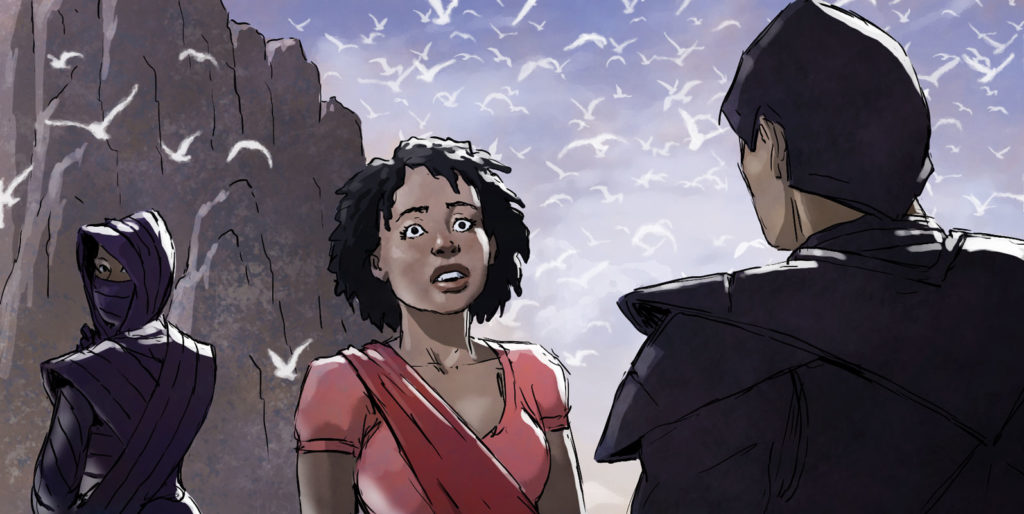
There was a raucous squawking among the gulls. A single raven, the color of midnight, had appeared. The other birds scattered to avoid it. Syisha, Song, and Jewell circled the Lady of Oriandra.
“If you love life,” Syisha shouted to the men. “Leave while you can!”
The squawking escalated into a cacophony as the seabirds took flight. Two more ravens had inexplicably joined the first. Rowl’s companions, Pike and Cort, fell into position flanking their Captain, hands tight on the hilts of sabers. Now there were five, seven, a score of the northern birds incongruously gathered on this tropical beach. They circled in tight formation above a rock at the foot of the Disiri cliffs, coalesced into a chaotic mass that resolved into the shape of a tall man. His robes, the color of midnight, remained a chaotic silhouette, the outline of which was occasionally interrupted by the flutter of a black wing.

Three sabers sang with the reverberation of tempered steel drawn from scabbards.
“Greetings, Milady,” said Cagi Nor, the Nightling Thaumaturge. His voice was surprisingly mundane, like that of a money lender. “Congratulations. Your little party has survived many challenges to reach this most obscure of islands.”
“Stand down!” Nacia shouted to the Krimsians. She faced the Thaumaturge. “Be merciful, Cagi. Let these men go. They have earned their lives.”
“But Milady,” replied the tall man. “After braving so much for you, don’t they deserve to see your face?” Cagi Nor gave a wave of the hand as if he were brushing lint from a hat. Nacia’s hood erupted in a cloud of purple butterflies that flitted into the air.
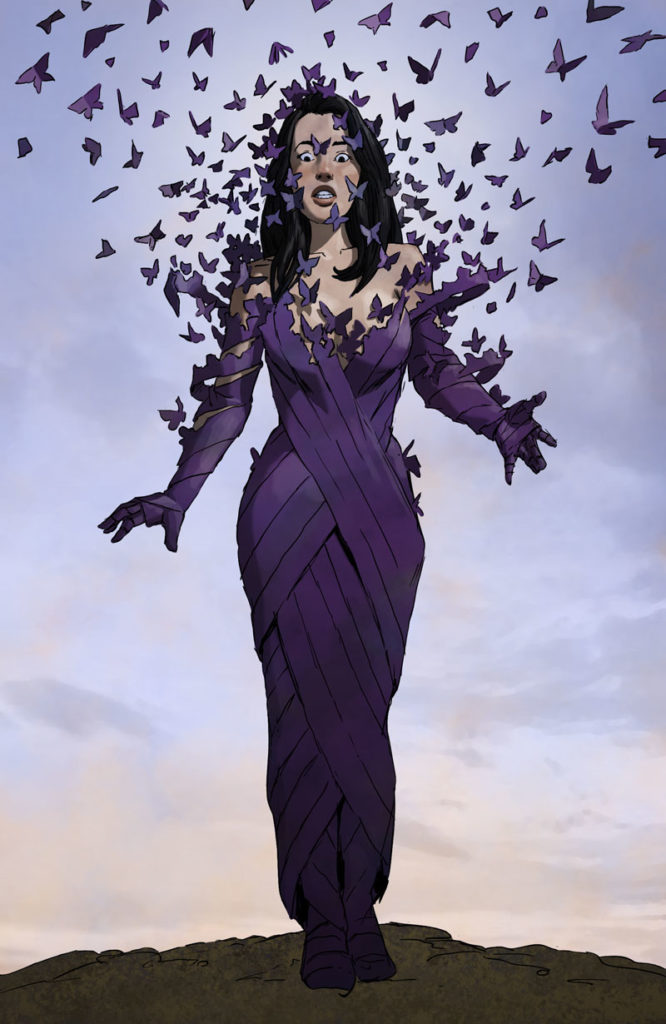
The Lady of Oriandra was as slender as her three companions. Her face was delicately proportioned and symmetrical, and yet at the sight of her, Pike, who was standing closet, dropped his sword and moved forward with arms outstretched.
He advanced three steps before his head was separated from his shoulders by the Captain of the Guard. Rowl was Pike’s brother, but the thought of another man wanting Nacia was suddenly unbearable to him. Before Rowl could take his brother’s place, he felt Cort’s blade slice open his back on its first stroke and hamstring his lower legs on its second. Then, as the Captain fell, he instinctively pivoted and buried his saber in Cort’s heart.
The three bodies landed in the sand within moments of each other.
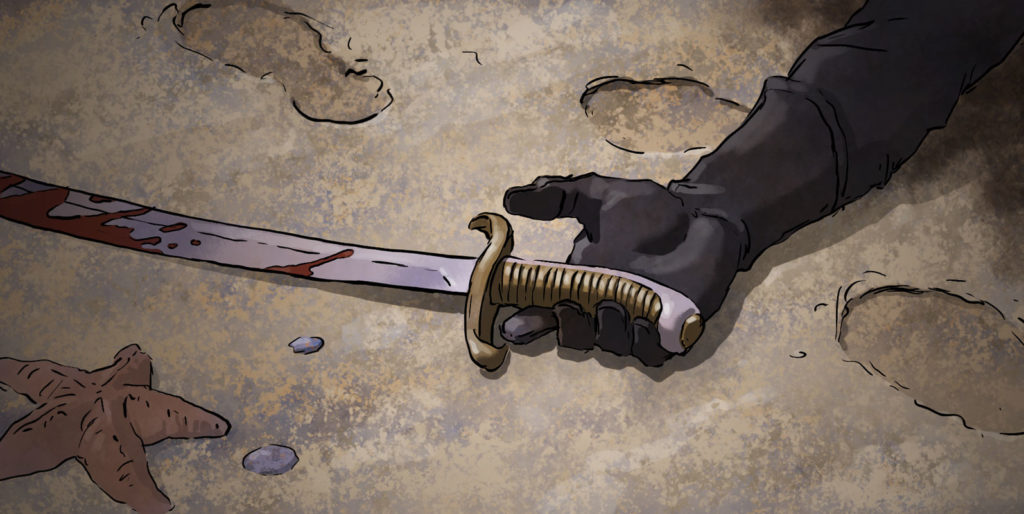
A wail of anguish escaped Nacia as the purple butterflies settled back into the fabric draped from her shoulders. Jewell dropped to her knees and covered her eyes.
Song stepped up to Nacia and touched her arm. “Milady, Rowl still lives.”
The Captain lay on his back while the blood was abandoning his body to mingle with the sand.
“We should spare him this misery,” said Syisha as she picked up a saber. “Does anyone know how to use one of these?”
“I have trained with ceremonial swords,” offered Jewell as she knelt in the sand. “But only for the stage.”
“I’ll do it,” said Nacia. She knelt beside the dying man. “Thank you for your service,” She said as she bent to kiss his forehead.
For a moment, the pain left Rowl. He smiled and closed his eyes as the slightest touch of Nacia’s lips caused the flesh to evaporate from his skeleton like a sigh in the wind.
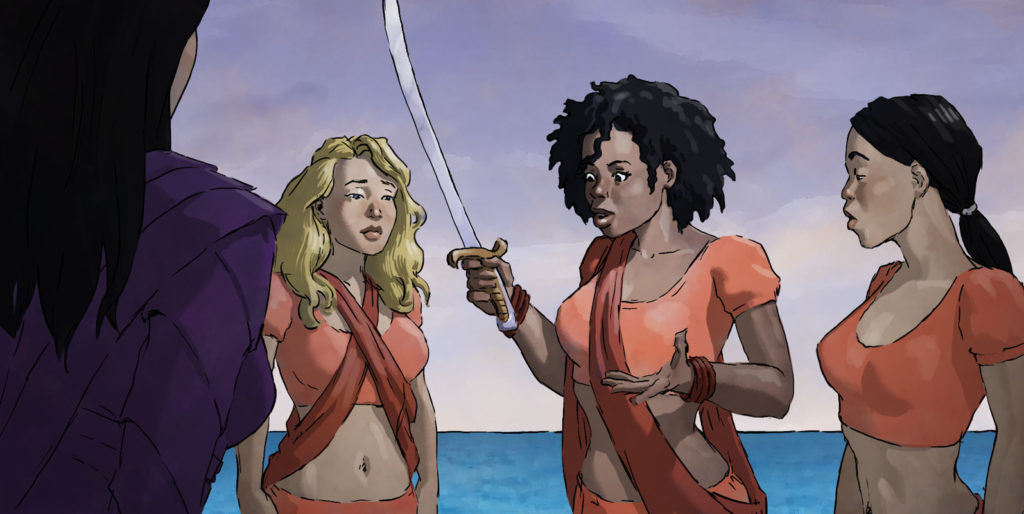
“How can any man be so heartless?” Nacia Oriandra turned to confront the Nightling Thaumaturge.
“It was your wish to be the most desired woman in the Five Kingdoms.” Cagi looked offended. “I am merely your servant.”
“You deceived me!”
“Men desire most that which they can never possess.” The birds that formed his cloak became restless once again. “Don’t blame me for human nature.”
With that, the tall man’s form dispersed into a flock of ravens and took wing. A moment later, the four women were alone on the beach with a launch they could not sail and three dead men at their feet.

The first thing Durn asked himself when he opened his eyes was, “Why is there a flock of ravens flying over me?” The second thing was, “Where the hell am I?”
1
“Overboard”
“I probably deserve this,” Durn thought when the guards threw him from the forecastle of the Xebec. He felt a rush of warm evening air before the cruel ocean swallowed him.
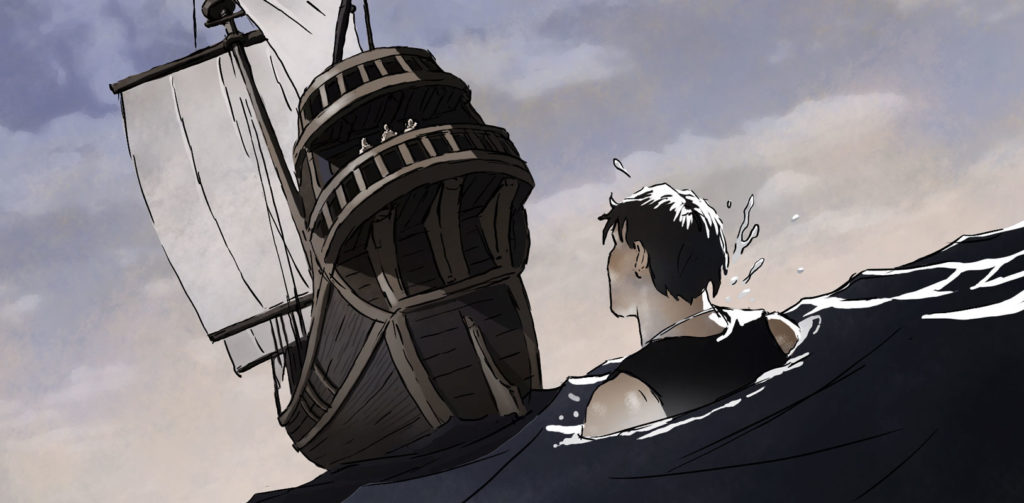
When he broke the surface of the water seconds later, Durn saw his former ship plowing relentlessly toward the horizon. The lanterns in the Captain’s quarters were lit, revealing the mysterious passengers who secreted there.
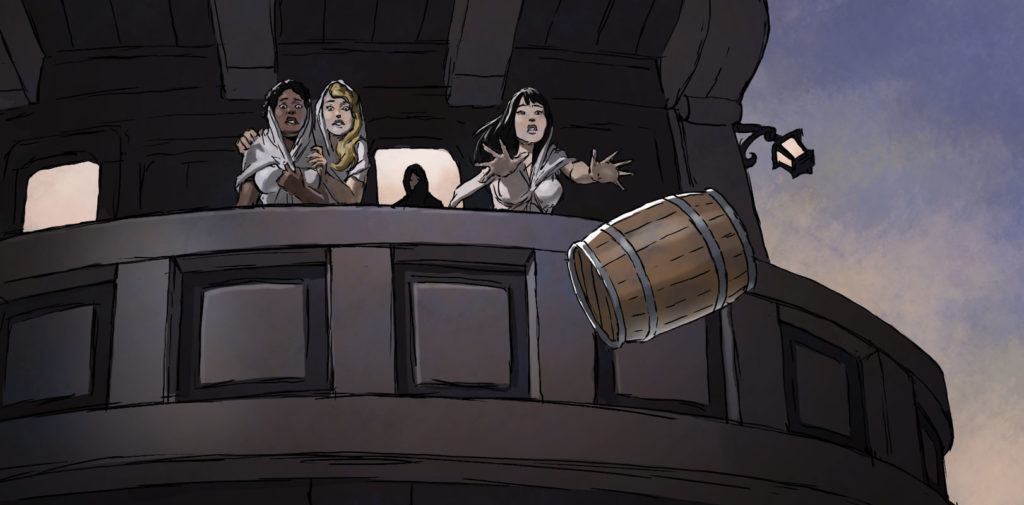
Besides the Captain, Durn was the only one who knew they were there. He had defied orders by climbing down the stern of the ship and peeking through the window. One of the four young women was pushing an empty barrel over the railing. Durn was confused by the thought that she intended the barrel for him.
His argument with the First Mate had been loud enough for the passengers to hear, but why would they be sympathetic to an insignificant sailor like him. Durn wanted to study the expression on the young woman’s face, but the heartless wind was carrying her and her companions fast away.

When the sun rose on the endless ocean, it shone down on the unfortunate sailor clinging to the empty barrel. As flotation devices went, the barrel was merely adequate. Durn could not climb on top of it. Barrels roll, it is in their design, and they will do so whether on land or in the sea. The morning sun would soon be burning his skin, even the submerged parts, and although water surrounded him, there was not a drop to drink.
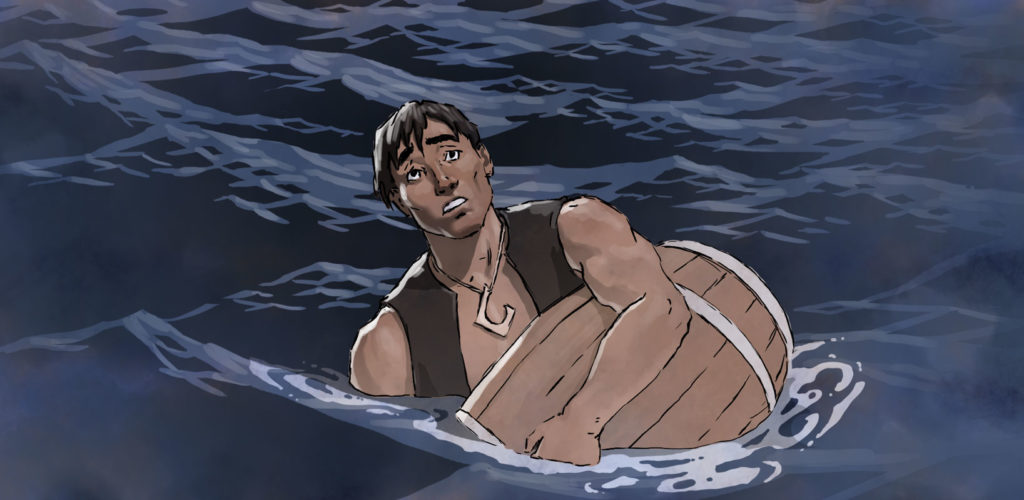
Why had he risked everything to glimpse the mysterious passengers sequestered in the Captain’s cabin? The Captain himself did not go there; instead, he bunked with the First Mate and the Navigator. With hope diminishing, Durn thought of his youthful ambition to rise above his station in life. A dream all but killed by the three years he had spent sleeping before the mast.
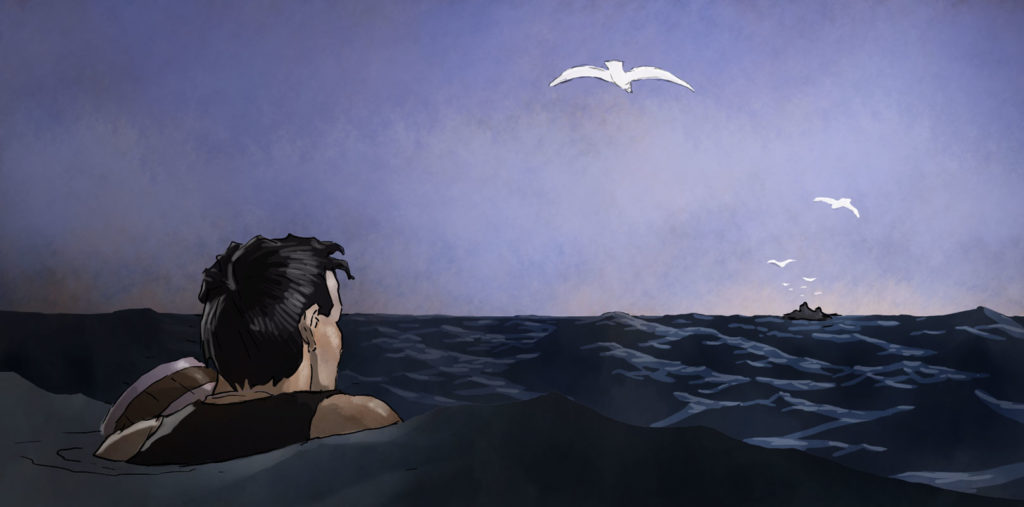
Lost in his pondering, Durn almost missed the cries of sea birds overhead. His heart quickened at the sound, and he rotated in the water to follow their flight. On the edge of the horizon was a lone island pushing up from the ocean floor. If not for the gulls, he would have missed it.
Too far away for him to swim even if he had a restful night’s sleep behind him, all he could do was hope for the tide to carry him closer.

Durn suddenly felt a tingle as if a warm current was surging past him. Then, from the corner of his left eye, he caught a glimpse of a shape. It was the length of a dolphin but more slender as it skimmed just below the surface of the rolling waves. For a moment, the ocean felt alive and inviting.
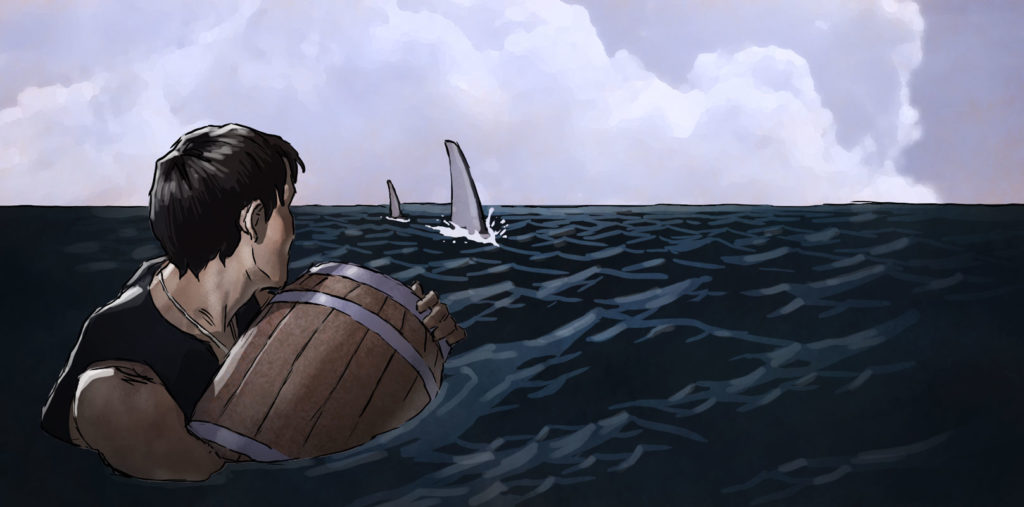
The moment was short-lived. The sailor sensed the shark’s presence before he saw its huge fin cutting the rolling surface of the ocean. Durn controlled his fear and remained motionless. The creature was in pursuit of something, and Durn saw no profit in distracting it.
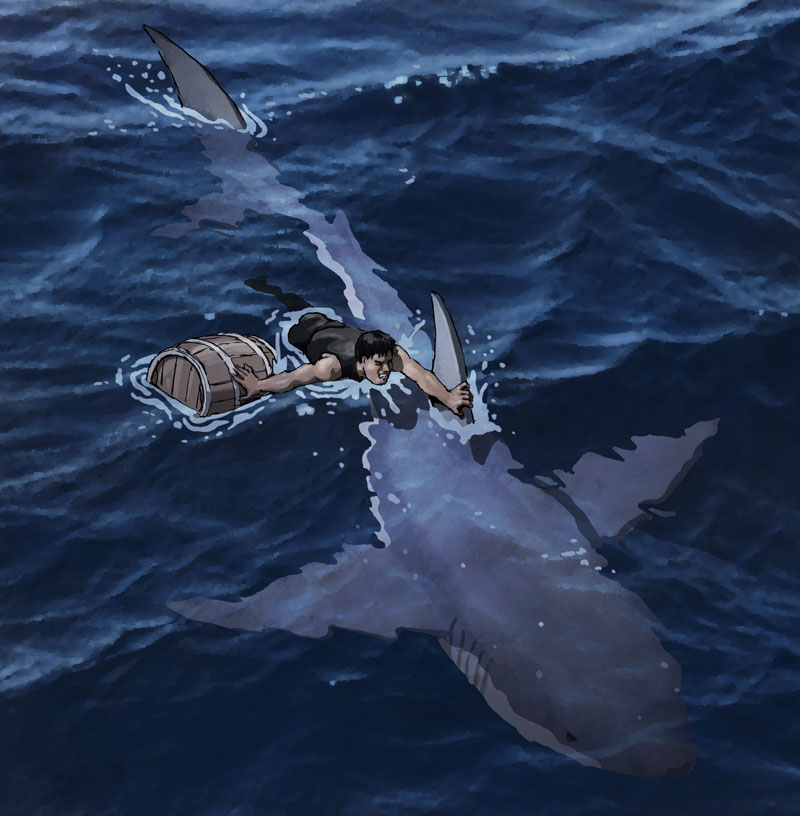
What he did next, Durn did without deliberation. He abandoned the barrel and caught hold of the dorsal fin as it sliced the water next to him. It was a desperate move by a desperate man. But the shark was moving quickly in the direction he wanted to go. If it carried him halfway to his destination (assuming he did not get eaten in the process), he might swim the rest of the distance.
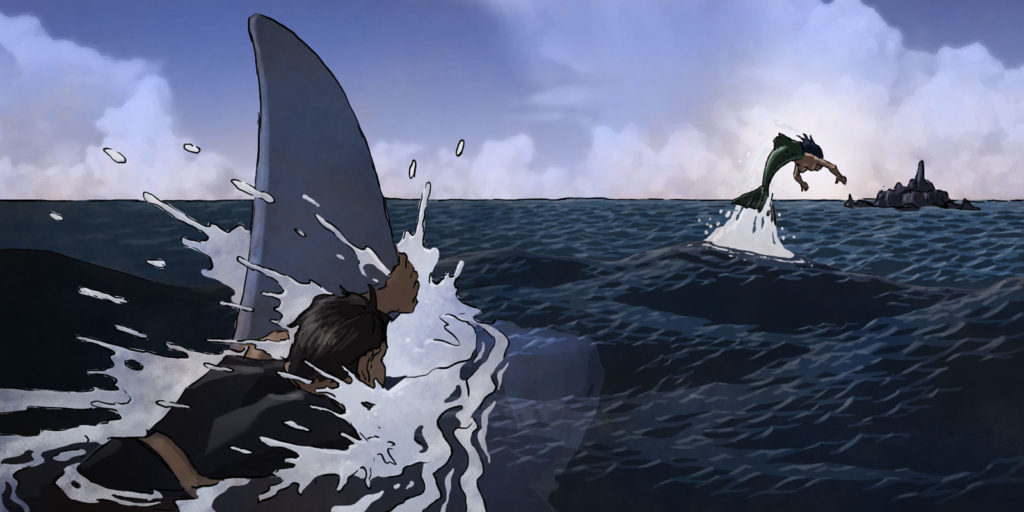
For several heightened moments, the young sailor’s plan seemed to be working. He kept his eyes focused on the island growing larger before him and not on the 2,500 lbs of sea predator taking him there. He was gauging the best moment to divest himself of his transportation when the creature the shark was pursuing breached the waves.
A shift in Durn’s perception of the world immediately occurred. He wanted to believe that what he had seen were two separate living things, one human and one fish, but that idea was proving a hard sell.
In meager heartbeats, the creature would be experiencing the shark’s teeth unless the sailor intervened. But what could a six-foot land dweller do against a twenty-four-foot carnivore in its preferred environment?
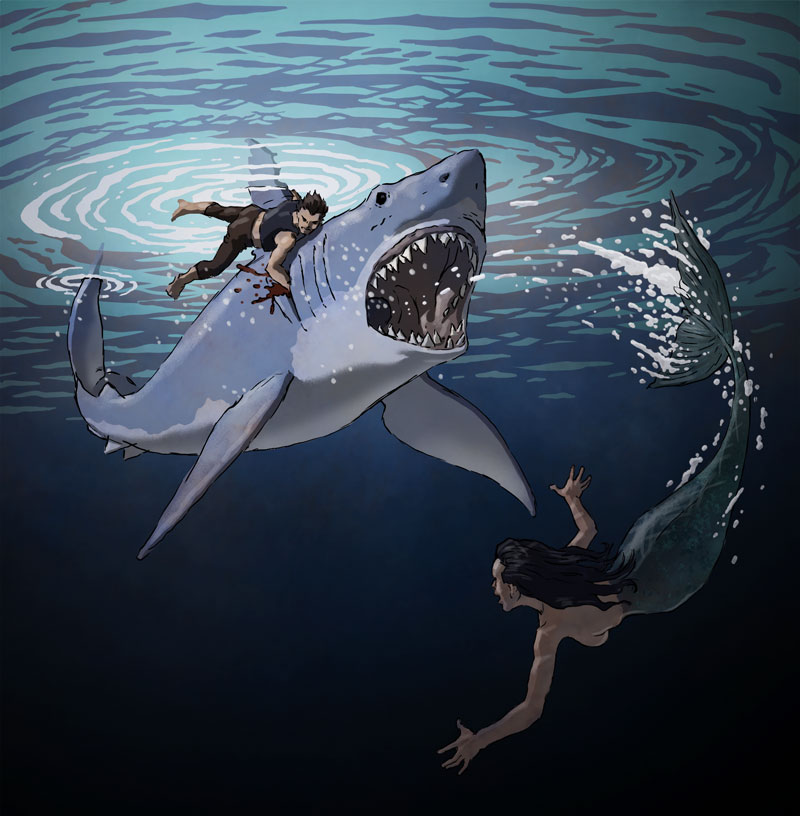
The shark had three tender parts. Its snout and its eyes were beyond the sailor’s reach, so Durn slid his right hand between the great fish’s gill, grabbed a handful of the soft flesh inside, and twisted with all the strength he had left.
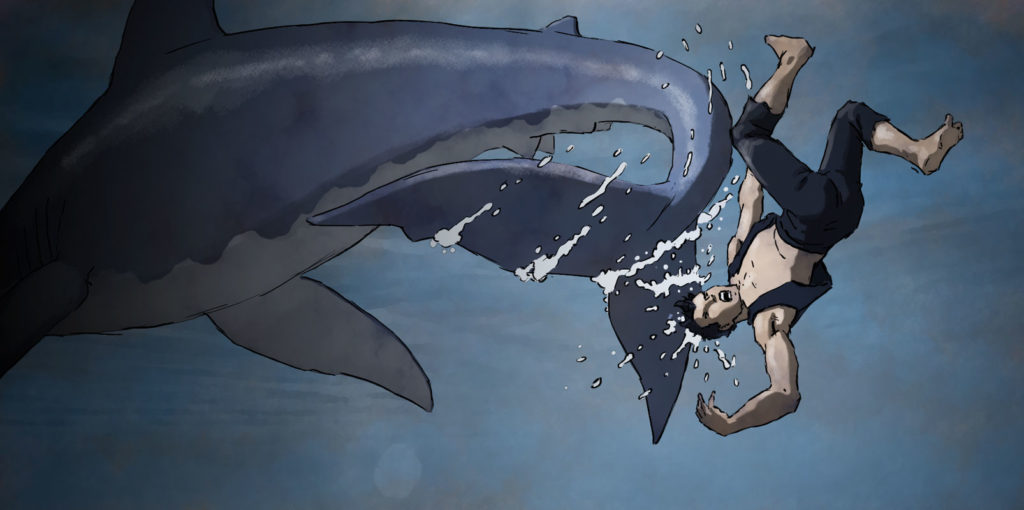
The results were immediate. The giant predator thrashed violently, throwing Durn from its back and striking him in the head with its tail.

Everything went black and reasonable people might assume this was the end of the impetuous young man’s story.
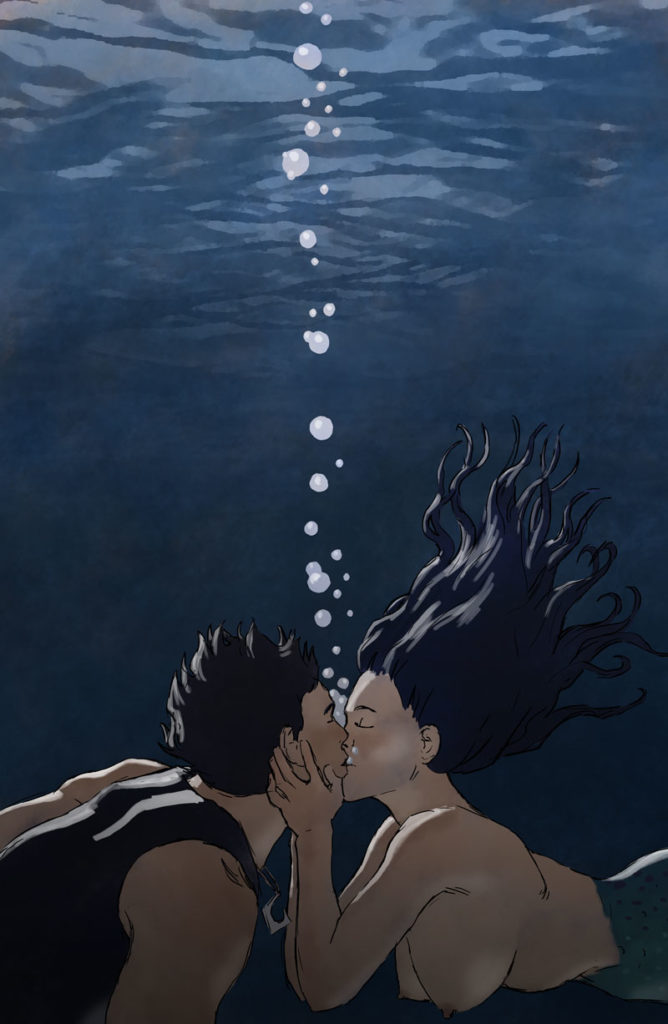
Read PART TWO of Voyage Rhapsody.
Ideas are plentiful. They surround us every day. Most of these flare for a moment or two and are content to fade away. Some are persistent.

Many years ago, an idea was pestering me. It was a little story about art school, and I had big adventures to write. To get it out of my head, I conceded to draft an outline. As I hurried through the story’s beats, a few lines of dialogue elbowed their way into my head, so I added them as I went. It was a small step to include the scene locations and a brief description of the action.
Five days later, I had the first draft screenplay for SEVEN EXTRAORDINARY THINGS. I didn’t intend to write this story. It just happened.
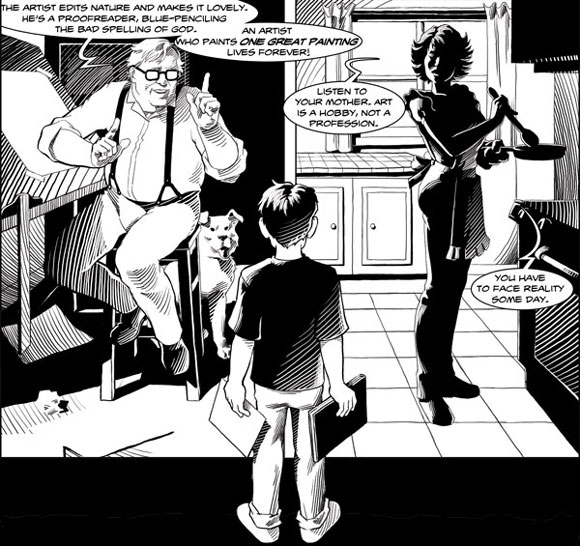
Years after that, I was entertaining the idea of drawing a comic book based on one of my unproduced screenplays. I had many of these, and most of my big adventures were ideal candidates for adaptation. SEVEN EXTRAORDINARY THINGS was not one of them, and for this reason, I decided to use it as a testing ground. I would save the other stories for a time when I was serious.
SEVEN EXTRAORDINARY THINGS almost got greenlit as a movie on seven different occasions. It was one of my best-received screenplays, but nobody knew how to categorize it. As I started drawing the story in a comic book format, I relived the narrative with the characters. And I kept drawing. I didn’t intend to complete it as a graphic novel. It just happened.

At the age of eleven, Greg Drucker McTeer makes a list of seven things he wants to do in his life to guarantee that he won’t be an ordinary person.
He attends the prestigious Loomis Art Institute at nineteen, where he decides to cross as many items off of his list as possible. Whether this is the smartest thing he ever did or the most foolish is open to debate. SEVEN EXTRAORDINARY THINGS is a story of art, love, and sleepless nights.
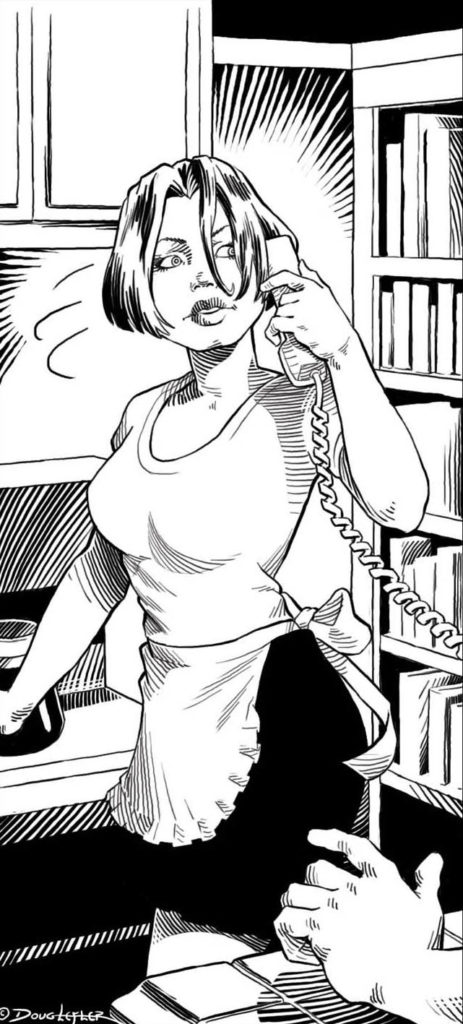
The complete graphic novel SEVEN EXTRAORDINARY THINGS is now available on this site. You can navigate to it by using the 7XT tab above left, or by clicking HERE.
Sometimes you know a new project is not going to end well, but you have to commit to it anyway and jump in with both feet.